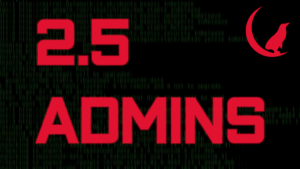
 2.5 Admins
2.5 Admins 2.5 Admins 228: Century-Scale Storage
Jan 2, 2025
Discover the intriguing challenge of storing data reliably for a century, exploring institutional funding and decade-proof redundancy. Uncover the complexities of preserving data amidst evolving technology and the importance of open standards. Learn about strategies for configuring backups in TrueNAS and the vital role of synchronization in cloud storage. The conversation also touches on innovative approaches to backing up ZFS without manual snapshots. Join the dialogue on ensuring that our digital heritage lasts through generations!
AI Snips
Chapters
Transcript
Episode notes
Generational Infrastructure
- Century-scale data storage requires generational infrastructure due to human lifespans and careers.
- Managing humans over such long periods is the biggest challenge for this type of project.
File Format Selection
- Use widespread, open-source file formats for archiving data.
- Prioritize formats not dependent on a single commercial entity for long-term accessibility.
Rosetta Code
- Store a "Rosetta code" with your data.
- This code should guide future users on how to decode the archived information.

